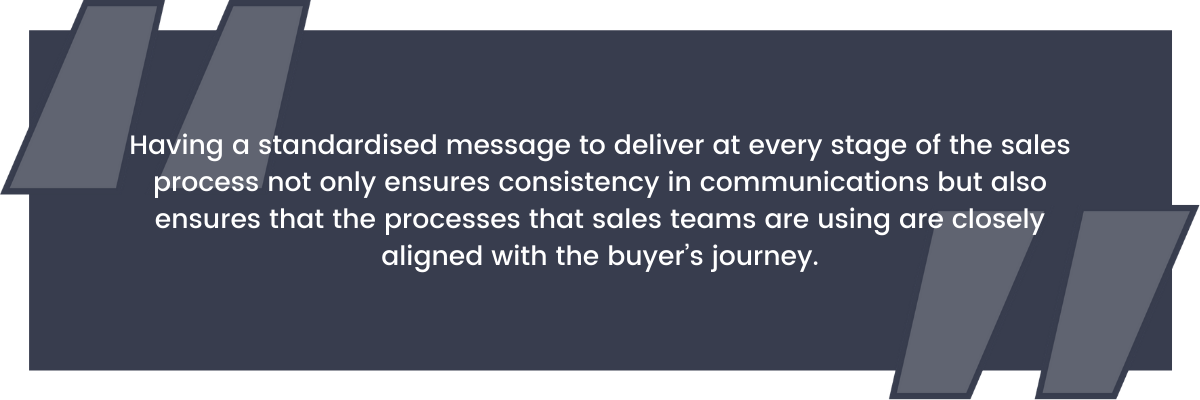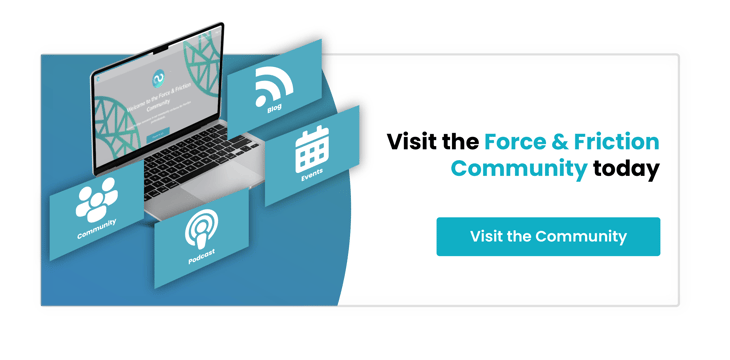
Sales Process Content - Empower and Enable Your Team to Win Today’s Modern Buyers
Sales and marketing are both incredibly similar in the sense that they both rely heavily on sending the right message, to the right prospect, at the right time. It’s all about communication. And yet they’re both very different in how they share this message.
Marketing teams use content to share a message. Whether it’s a traditional print ad or a digital ppc ad, or blog posts, or product descriptions, or anything else… no matter which marketer is handling what prospect, the prospect receives the same message. That’s because the message is pre-designed or standardised, so it holds the ability to remain exactly the same, no matter who is delivering it, or how they’re delivering it.
Sales teams use themselves to share a message. Whether it’s cold calling, in-person or virtual meetings, real time product demos, or anything else… the message that sales reps send will always include the personality and preferences of that particular rep. The traditional way that sales works means there’s really no standardisation. Different prospects can receive different messages depending on which rep they’re talking to.
When we look at processes from this perspective, it's easy to see who does it best: marketing. So should inbound sales teams be incorporating content into their own processes?

The Importance of Sales Process Content

Sales process content for each stage of the journey - from awareness to consideration to decision - takes the guesswork out of sales. It helps to educate sales teams about what buyers are looking for at each stage. It gives them confidence to sell as they know they are delivering the right message at the right time, and it ultimately empowers them to close more deals.

How to Use Content in Sales
While there are many different types of content out there, the most important factor here is to identify types of content that will facilitate sales enablement and make it easier for your sales reps to sell effectively to your target audience. It should also help sales reps to transition prospects from SQLs through to customers.
There are 12 different types of content that can help to achieve this:
- Blog Posts - Analyse customer data to determine the most common questions that prospects ask sales reps, and use these questions as inspiration for creating new blog posts. Each post could either directly or indirectly answer these questions, so that leads are more educated and more informed by the time they reach out to the sales team.
- Whitepapers - Whitepapers take blog posts to the next level. Sales teams can use whitepapers to transform customer queries or concerns into in-depth, data-driven resources that provide a comprehensive overview of a niche area. Like blog posts, whitepapers are used to educate and inform in a bid to generate higher quality leads for the sales pipeline.
- Case Studies - Every sales team has case studies. Every single closed deal is a case study. And this is hugely valuable content that many sales teams just sit on and keep to themselves. Case studies are proof that your product or service can make a difference, do a job, and implement solutions to problems, so why not share them with audiences?
- Video - Not all content has to be text-based. In fact, video content offers a more lively and personal way to attract, engage, and delight audiences. Video can be used to demonstrate product usage, to introduce the team, or to position the business as an industry leader through tutorials, webinars, or even interviews with your in-house experts.
- Interactive Quizzes - On-site interactive content such as quizzes and surveys act as one of the easiest ways for sales reps to learn more about the people they’re selling to. After all, if you want to know who’s buying your product, you only need to ask! Asking outright, however, can be awkward. Asking through fun content is much more effective
- Sales Scripts - While content can help to standardise a message, it’s still important for sales reps to inject their own personality into communications. And sales ‘scripts’ can help form a middle ground between standardisation and flexibility. A good sales script isn’t rigid, but it does help to guide reps through the right conversational touch points.
- Product Sheets - Content that improves knowledge of what a sales rep is trying to sell is always useful, right across every stage of the buyer’s journey. Reps must know their product, inside and out. Product sheets can help with this. A good product sheet will cover everything from what a product does to who uses it and how much it costs.
- Competitor Analysis Documents - Competitor analysis is a strategic necessity, and many businesses are already doing this. What they’re not doing is transforming the data they hold about the competition into sales-accessible documentation. Analysis sheets help reps to see what others are doing, and identify what’s working, and what isn’t.
- Email Templates - In an effort to ensure the right message is being delivered at the right time, sales teams can work together - and with their marketing counterparts - to generate a range of email templates for all different occasions. This could include follow up emails, outreach emails, and check-in emails, depending on the stage.
- One-Pagers - Not all sales process content has to be detailed. In fact, sometimes, a simple and straightforward one-pager will do the job. This sort of content provides a quick, clear overview of the brand and any products or services and can be scanned easily by prospects looking for a rapid ‘yes/no’ answer to whether you’re right for them.
- Presentations - This sort of content will need both sales teams and marketing teams to work together to generate presentations that really have an impact. Marketing teams - who are accustomed to creating content - can bring clarity and consistency to the overall message, while sales teams can bring insight into what’s needed to close.
- Social Media Content - By sharing Facebook posts, Tweets, and LinkedIn content, reps can form stronger relationships with audiences. This type of content allows sales reps to engage in real time with prospects through a platform where that prospect feels comfortable. When prospects are comfortable, they feel confident moving forward.
Adapting Sales Processes
Perhaps the most important thing to remember here is that it’s not enough to simply create sales process content; the use of this content must also be incorporated into the actual sales process. That’s because, even if sales process content is available to them, your team is unlikely to use it unless content is a standardised part of the sales strategy. And so, as a manager, it’s important to work to adapt the existing sales process to include the use of content that can better enable sellers to do what they do best: sell.







%20-%20Teal.png?width=500&height=130&name=Force%20%26%20Friction%20-%20Branding%20-%20Logo%20(White)%20-%20Teal.png)